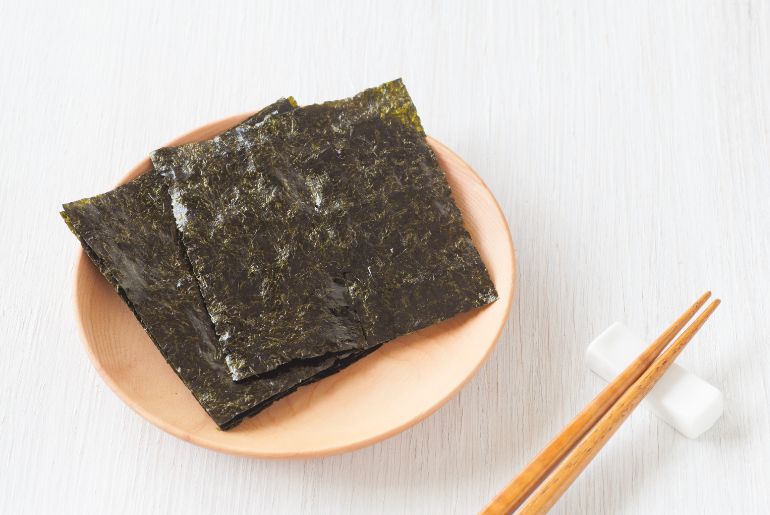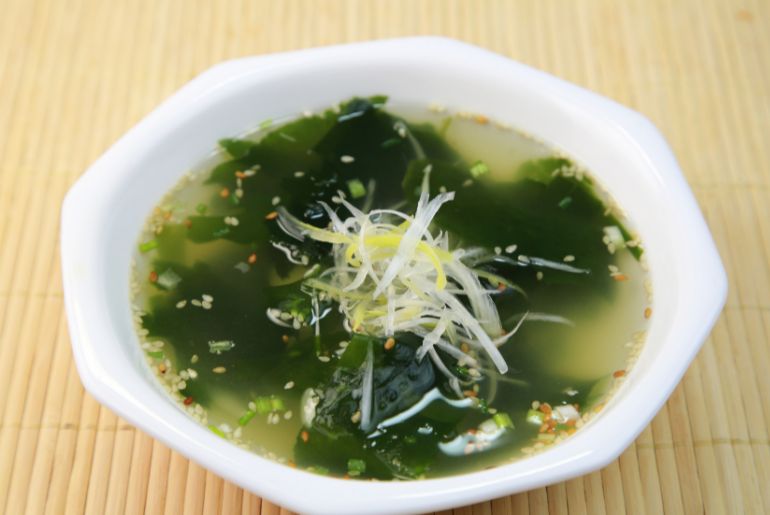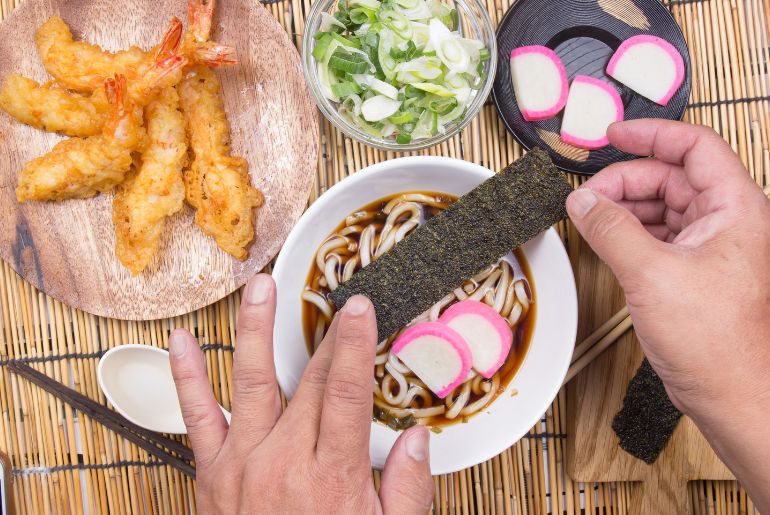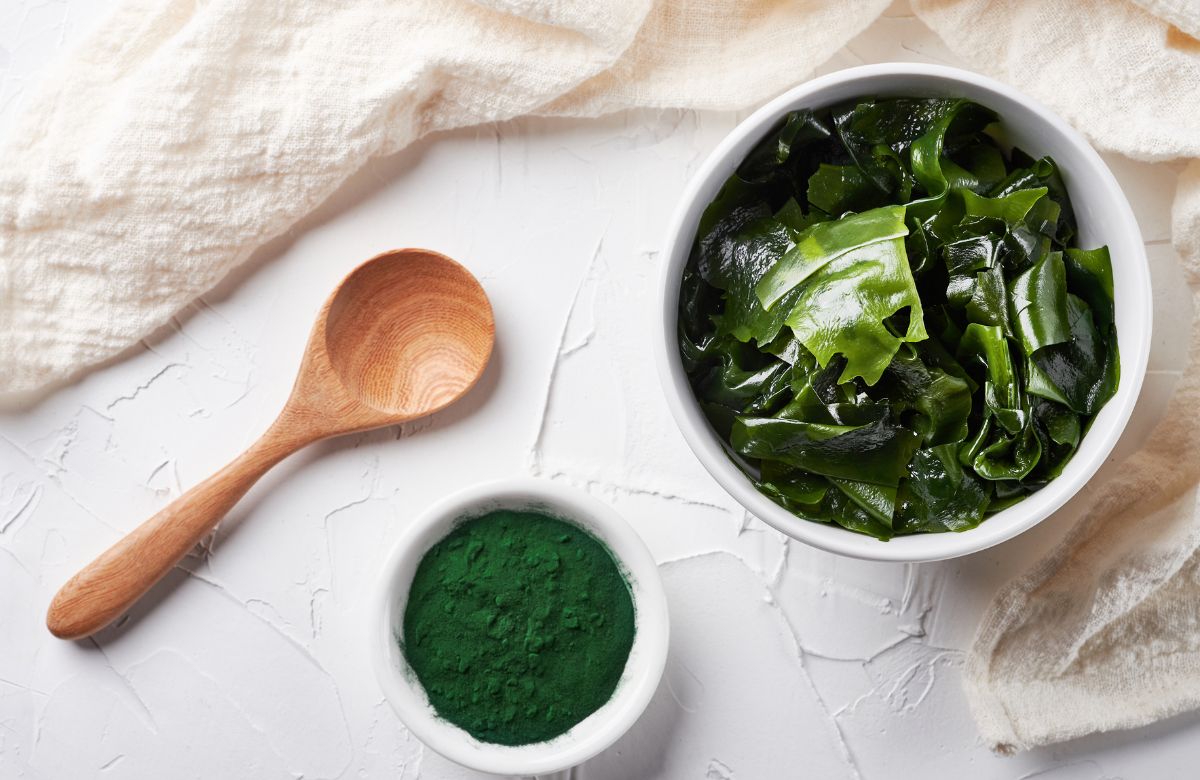Seaweed has long been an integral part of Japanese culinary heritage, providing unique flavours, textures, and health benefits. Seaweed, or “nori” as it is known in Japan, has been an integral part of Japanese cuisine for centuries. Its rich tradition, diverse varieties, and versatile applications make seaweed a fascinating ingredient that embodies the essence of Japanese cuisine.
What Makes This Seaweed So Popular In Japan?

Seaweed consumption in Japan dates back over 2,000 years. The practice of eating them originated in coastal regions, where it was readily available. It was initially consumed for its medicinal properties before transitioning into a staple food item. Moreover, the ingredient has many nutritional properties. It is rich in vitamins, minerals, dietary fiber, and antioxidants.
Here are some additional benefits:
- Nutrient-rich: Comes with essential vitamins and minerals. It comes with iodine, iron, calcium, magnesium, potassium, and vitamins A, C, and E
- Antioxidant properties: Has various antioxidants, such as flavonoids, carotenoids, and vitamin C
- Digestive health: Has a good source of dietary fiber, which promotes digestive health by adding bulk to the stool, aiding in regular bowel movements.
- Anti-inflammatory effects: Certain compounds in seaweed possess anti-inflammatory properties
Moreover, seaweed is known for its beneficial properties for the skin. In Japan, seaweed extracts are used in cosmetic products such as facial masks, moisturizers, and body lotions. It is believed to hydrate, nourish, and revitalize the skin, making it a sought-after ingredient in Japanese skincare routines.
In recent years, seaweed has gained international popularity as a result of its unique taste, health benefits, and sustainability. Japanese cuisine, including the extensive use of seaweed, has influenced global culinary trends.
Also Read: Looks Like Melon, Tastes Like Lemon! Japanese Farmers Grow Lemon Melon Costing ₹1899 Per Piece
Japanese Dishes Prepared With Seaweed
Beyond its use in sushi rolls, the Japanese have found various creative ways to incorporate this ingredient into their diet and daily lives.
1. Miso Soup

Miso soup is a staple in Japanese cuisine, often served as an appetizer or a side dish. Seaweed, particularly wakame, is an essential ingredient in this comforting soup.
2. Sunomono Salad
Sunomono is a refreshing Japanese salad typically made with thinly sliced cucumbers, rice vinegar, and soy sauce. Seaweed, such as wakame or hijiki, is often added to the salad
3. Chawanmushi
Chawan-mushi is a custard-like egg and vegetable dish steamed in a cup. Its typical ingredients are shrimp, shiitake, lily bulb, trefoil, ginkgo, and so on.#japanesefood#chawanmushi pic.twitter.com/kHyGeewmGc
— Healthy Food IC Japan (@ic_japan) March 10, 2022
Often served as an appetiser, Chawanmushi is a delicate Japanese egg custard dish. While not the main ingredient, seaweed garnishes, such as strips of nori or kelp, enhances the visual appeal.
4. Onigiri
Onigiri, also known as rice balls, are a popular portable snack in Japan. Nori wraps the onigiri. They provide a convenient and edible outer layer that keeps the rice moist.
5. Tempura

Tempura is a deep-fried dish consisting of lightly battered and fried seafood, vegetables, or mushrooms. Seaweed, especially nori, is sometimes used as a wrapping.
6. Udon And Ramen
Udon and ramen, two popular Japanese noodle dishes, can also feature seaweed as a topping. You can find thin strips of nori placed on the surface of the steaming hot noodles.
The versatility of this ingredient allows for its incorporation into various dishes and products, showcasing its significance in Japanese culture.
So, the next time you savour Japanese cuisine, remember to appreciate the unique flavours and textures that seaweed brings to the table.
Cover image credits: Canva
First Published: July 18, 2023 6:56 PM



